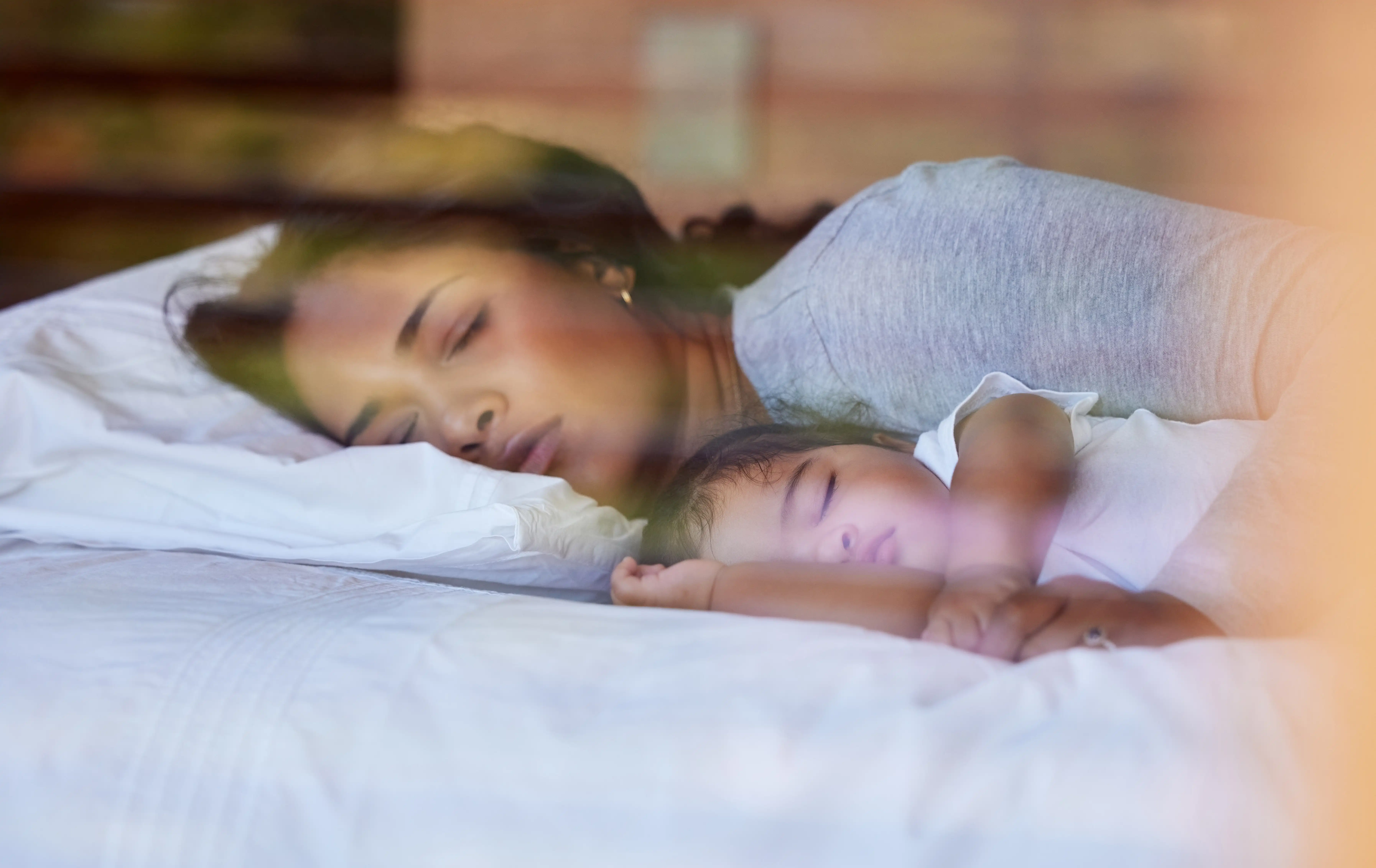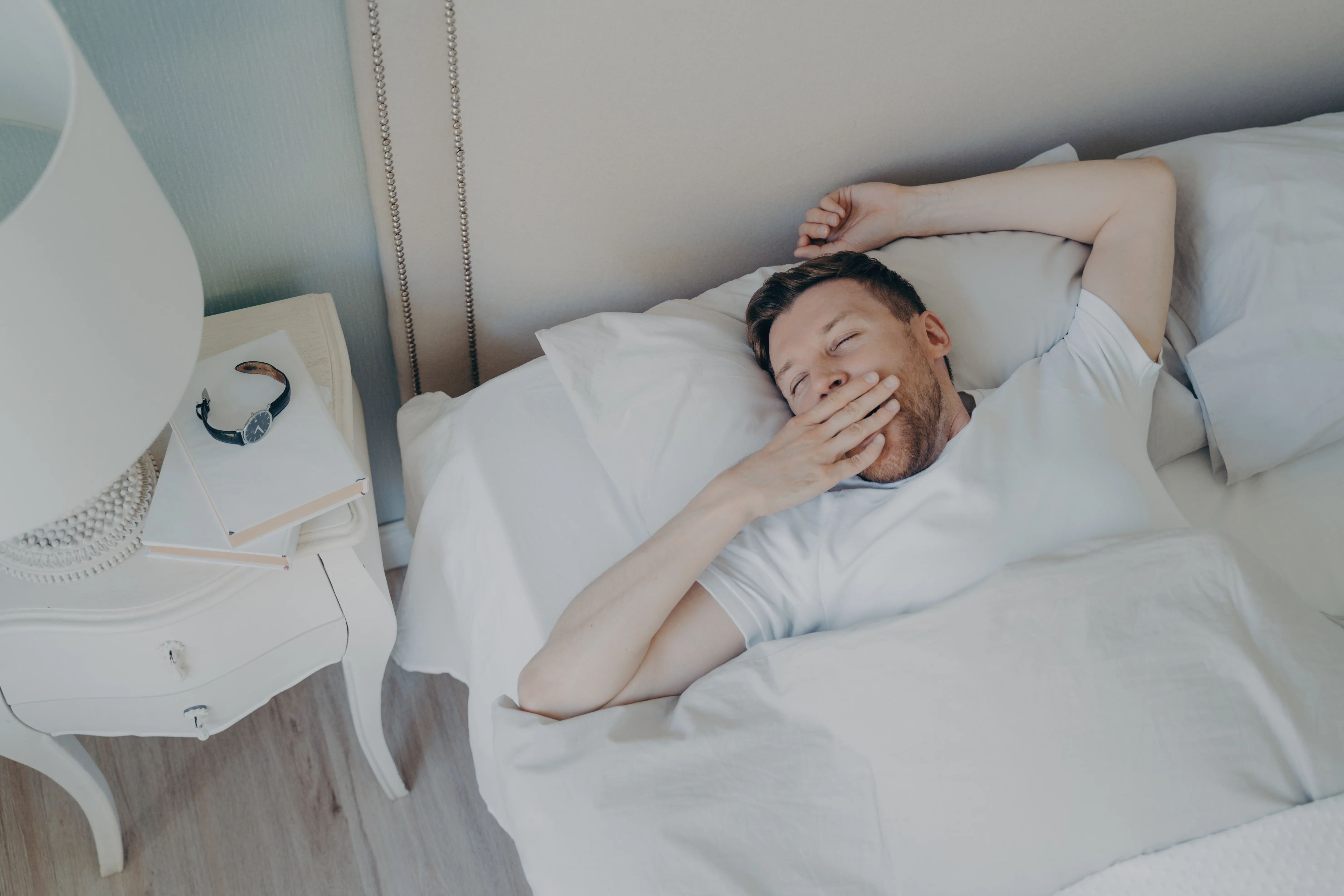Sleep apnea is a serious sleep disorder that affects millions around the world, making it crucial for us to understand the underlying causes of sleep apnea for effective management and treatment.
While lifestyle factors such as obesity, alcohol consumption, and anatomical abnormalities are well-known contributors, a growing body of research suggests that genetics may also play a critical role.
What is sleep apnea?
Sleep apnea is a common sleep disorder characterized by repeated interruptions in breathing during sleep. These interruptions can last from a few seconds to minutes and may occur multiple times throughout the night, leading to fragmented sleep and decreased oxygen levels in the body.
Types of Sleep Apnea
There are various types of sleep apnea, and understanding these types of sleep apnea is vital for ensuring that affected individuals receive appropriate care and improve their overall quality of life.
- Obstructive Sleep Apnea (OSA): Obstructive Sleep Apnea (OSA) is the most prevalent form, resulting from the relaxation of throat muscles that leads to a temporary blockage of the airways. It is often associated with excessive snoring and daytime fatigue, as the body frequently wakes up to regain normal breathing.
- Central Sleep Apnea (CSA): Central Sleep Apnea (CSA), on the other hand, differs significantly from OSA, as it involves a failure of the brain to send appropriate signals to the muscles that control breathing. This type is less common and is often associated with underlying medical conditions such as heart failure or stroke.
- Complex/Mixed Sleep Apnea: Complex or Mixed Sleep Apnea encompasses features of both OSA and CSA, presenting a unique challenge for diagnosis and treatment. Patients with this condition may initially exhibit signs of OSA but later develop CSA episodes when treated.
Can sleep apnea be inherited?
Individuals with a family history of sleep apnea are at an increased risk of developing the condition themselves.
This hereditary link may be attributed to shared genetic factors that affect the anatomical features of the upper airway or other physiological characteristics that contribute to the disorder.
However, the nature versus nurture debate also plays a crucial role in understanding sleep apnea's etiology. Environmental factors, such as obesity, smoking, and lifestyle choices, significantly influence the prevalence of sleep apnea in both men and women.
While men are statistically more likely to be diagnosed with sleep apnea due to physiological differences, such as larger neck circumference and more prominent neck tissue, women may experience sleep apnea differently, particularly post-menopause, when hormonal changes can exacerbate symptoms.
Thus, while genetics certainly contributes to the risk of sleep apnea, it is essential to consider the interplay of hereditary factors and environmental influences in its manifestation.
Inherited Traits That Raise Sleep Apnea Risk

Sleep apnea is a complex and multifactorial disorder that can significantly impact an individual's health and quality of life. Among the various factors contributing to the risk of developing sleep apnea, inherited traits play a crucial role.
Understanding how these inherited traits influence the likelihood of sleep apnea is essential for both prevention and treatment strategies.
Obesity and Metabolism
Obesity and metabolism are two of the most significant inherited traits associated with increased sleep apnea risk. Genetic predisposition to obesity can lead to excess fatty tissue accumulation, particularly in the upper body, which can obstruct the airway during sleep.
Furthermore, metabolic disorders that affect how the body processes energy and stores fat can exacerbate this tendency towards obesity. Individuals with a family history of obesity may have a higher likelihood of developing sleep apnea due to these inherited metabolic factors.
Craniofacial Structure
Craniofacial structure is another inherited trait that can influence sleep apnea risk. Variations in the size and shape of the jaw, palate, and airway can predispose individuals to airway obstruction during sleep. For instance, individuals with a narrower airway or an elongated soft palate may be more susceptible to developing obstructive sleep apnea.
Genetic factors that dictate craniofacial development can therefore have profound implications for respiratory health during sleep. Clinicians must consider these anatomical variations when diagnosing and treating patients for sleep apnea, as tailored interventions may be necessary based on individual craniofacial characteristics.
Muscle Tone and Neurological Control
Muscle tone and neurological control are also critical components related to inherited traits that can affect the likelihood of sleep apnea. The muscles of the upper airway play a vital role in maintaining airway patency during sleep, and genetic influences on muscle tone can lead to conditions such as hypotonia.
If the muscles are not sufficiently toned or are unable to respond appropriately during sleep, the risk of airway collapse increases significantly. Moreover, neurological control mechanisms that govern muscle function during sleep can be affected by inherited traits, leading to further complications in maintaining an open airway.
Neck Circumference
The neck circumference is a key measure that correlates with sleep apnea risk and can be influenced by genetic factors. A larger neck circumference often indicates increased fatty tissue around the neck area, which can compress the airway while lying down.
Assessing neck circumference as part of a comprehensive evaluation for sleep apnea can provide valuable insights into an individual’s risk profile.
Preventive Strategies for People with Genetic Risk
Sleep apnea is a serious sleep disorder characterized by repeated interruptions in breathing during sleep.
For individuals with a genetic predisposition to developing this condition, implementing preventive strategies is critical in mitigating the risk and severity of symptoms.
Weight Management
One of the most effective preventive strategies for individuals genetically predisposed to sleep apnea is weight management. Excess weight, particularly around the neck, can increase the likelihood of airway obstruction during sleep.
Therefore, maintaining a healthy body weight through a balanced diet and regular physical activity can help reduce this risk. Engaging in aerobic exercises, strength training, and flexibility workouts not only aids in weight control but also contributes to improved cardiovascular health, which is essential for individuals at risk of sleep apnea.
Strengthening Airway Muscles
Strengthening the airway muscles is another vital strategy that can help prevent sleep apnea. Exercises targeting the muscles of the throat and airway can lead to increased muscle tone, which may reduce the likelihood of airway collapse during sleep.
Techniques such as singing or performing specific throat exercises have shown promise in enhancing airway stability. By incorporating these practices into daily routines, individuals can actively work towards minimizing their risk of developing obstructive sleep apnea.
Avoiding Alcohol and Sedatives Before Bed
Avoiding alcohol and sedatives before bed is crucial for those with a genetic predisposition to sleep apnea. These substances can relax the muscles in the throat, increasing the chances of airway obstruction and exacerbating sleep apnea symptoms.
It is advisable to establish a clear boundary regarding the consumption of alcohol and sedative medications, particularly in the hours leading up to bedtime. Instead, individuals should consider alternative relaxation techniques such as deep breathing exercises or meditation to promote restful sleep without compromising airway integrity.
Establishing Good Sleep Hygiene
Establishing good sleep hygiene is equally important for preventing sleep apnea. Developing a consistent sleep schedule, creating a comfortable sleep environment, and practicing relaxation techniques can enhance overall sleep quality.
Individuals should aim for 7-9 hours of uninterrupted sleep each night, utilizing practices such as limiting screen time before bed and keeping the bedroom dark and cool. These efforts contribute to better restorative sleep and may help reduce the severity of any potential sleep-related disorders.
Routine Checkups and Proactive Health Monitoring
Routine checkups and proactive health monitoring are essential for individuals at genetic risk for developing sleep apnea.
Regular visits to healthcare providers allow for early detection of any emerging symptoms or related health issues. A thorough examination may include assessments of weight, respiratory function, and overall health status.
Additionally, discussions regarding any changes in sleep patterns or daytime fatigue can guide healthcare professionals in recommending further diagnostic evaluations or interventions tailored to an individual’s specific needs.
Treatment Options to Manage Sleep Apnea Effectively

Sleep apnea is a common yet serious sleep disorder characterized by repeated interruptions in breathing during sleep. Effective management of this condition is crucial for improving sleep quality and overall health. Various treatment options exist, each tailored to the severity and specific characteristics of the disorder.
CPAP and BiPAP Machines
Among the most widely used therapies are Continuous Positive Airway Pressure (CPAP) and Bilevel Positive Airway Pressure (BiPAP) machines, which are considered the gold standard for treating obstructive sleep apnea.
CPAP machines work by delivering a continuous stream of air through a mask, keeping the airways open during sleep. BiPAP machines, on the other hand, provide two levels of pressure: a higher pressure during inhalation and a lower pressure during exhalation, making it a suitable option for patients who find CPAP uncomfortable.
Oral Appliances
Another viable treatment option is the use of oral appliances, which are custom-fitted devices designed to reposition the jaw and tongue to keep the airway open.
These appliances are often recommended for patients with mild to moderate sleep apnea or those who cannot tolerate CPAP machines. Oral appliances are generally more portable and user-friendly, making them an appealing alternative for many individuals.
Surgery
Surgical interventions, such as UPPP surgery, may also be considered for those with anatomical issues contributing to their sleep apnea, such as enlarged tonsils or nasal obstructions.
Surgical options can range from tissue removal procedures to more complex surgeries aimed at restructuring the airway.
HGNS
Newer technologies such as Hypoglossal Nerve Stimulation (HGNS) have emerged as innovative treatments for obstructive sleep apnea.
HGNS involves implanting a small device that stimulates the hypoglossal nerve, temporarily preventing the tongue from blocking the airway during sleep.
This method has shown promising results for patients who cannot tolerate CPAP therapy and have moderate to severe obstructive sleep apnea.
Positional Therapy
Positional therapy is another effective strategy, particularly for individuals whose sleep apnea symptoms are exacerbated when sleeping on their backs.
This approach encourages sleeping in a side position to reduce airway obstruction. Various positional devices and pillows are available to help individuals maintain this position throughout the night.
Weight Loss Programs
Weight loss programs also play a significant role in managing sleep apnea effectively. Excess weight, particularly around the neck, can contribute to airway obstruction during sleep.
For overweight individuals, achieving even modest weight loss can lead to significant improvements in sleep apnea symptoms. Comprehensive weight loss programs incorporating dietary changes, exercise regimens, and behavioral modifications can be beneficial in reducing the severity of the condition.
FAQs
Can children inherit sleep apnea from their parents?
Children may inherit a predisposition to sleep apnea from their parents, particularly if there is a family history of the disorder. This genetic link, combined with environmental factors such as obesity and enlarged tonsils, can increase the likelihood of developing sleep apnea in offspring.
Are there genetic tests to predict sleep apnea?
Yes, polysomnography and clinical evaluation, along with genetic testing, may provide additional insights into an individual's predisposition to sleep apnea.
If I’m fit but have a family history, can I still get sleep apnea?
Even if you maintain a high level of fitness, having a family history of sleep apnea can still place you at risk for developing the condition.
Conclusion
While sleep apnea is linked to various genetic factors, it is essential to recognize that the condition is multifaceted. Genetics may contribute to anatomical features and physiological traits that predispose individuals to sleep apnea. However, environmental influences, lifestyle choices, and other health conditions also play significant roles in its development of OSA risk.
Dom Abraham
As the lead content writer at Sleepiverse. Dom pours his heart into writing mattress reviews, bedding product reviews, and medically-reviewed health articles. Dom is from Portugal and likes to spend his free time writing on the beach as it gives him a sense of comfort. Aside from writing mattress reviews in front of the soothing beach view, Dom likes to experiment with new amazing food ideas.


